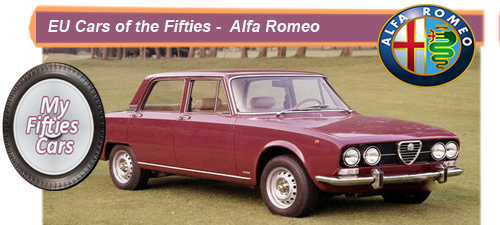
The European car industry Alfa Romeo have traditionally been looked upon as a classic developer and manufacturer of "middle of the road" vehicles.
 Sitting comfortably in a niche between Fiat in the compact economy level and the makers of opulent and high powered saloons, such as Ferrari, Lamborghini, and Maserati, Alfa Romeo have a long and rich history.
Sitting comfortably in a niche between Fiat in the compact economy level and the makers of opulent and high powered saloons, such as Ferrari, Lamborghini, and Maserati, Alfa Romeo have a long and rich history.
Founded in 1906 in the industrial city of Milan, Alfa Romeo were originally known as just Alfa, an abbreviation of "Anonima Lombarda Fabbrica Automobili."
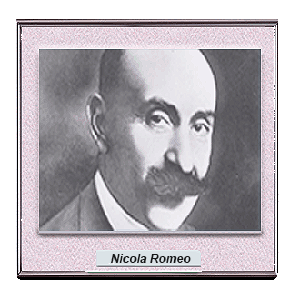 The original founders of Alfa Romeo were the French automobile firm of Alexandre Darracq, who got together with some local Italian investors to produce and market some of their cars in Italy.
The original founders of Alfa Romeo were the French automobile firm of Alexandre Darracq, who got together with some local Italian investors to produce and market some of their cars in Italy.
Unfortunately for Daracq, local buyers did not take to their designs, and, with sales flagging, the Italian partners wrested controlling shareholders Daracq out hiring a local designer by the name of Giuseppe Merosi to develop new cars that would hopefully be more appealing to the local market.
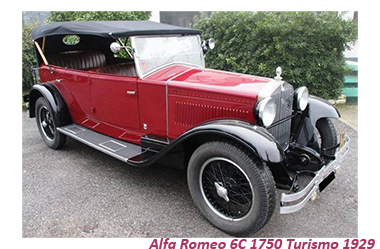 Things soon took a turn for the better at Alfa, whose rising fortunes captured the attention of Nicola Romeo. With war raging in Europe Romeo saw an opportunity and rapidly wound the company’s domestic car production to produce military hardware - a move that was to prove as lucrative as it was patriotic.
Things soon took a turn for the better at Alfa, whose rising fortunes captured the attention of Nicola Romeo. With war raging in Europe Romeo saw an opportunity and rapidly wound the company’s domestic car production to produce military hardware - a move that was to prove as lucrative as it was patriotic.
With the war over and money in the bank, Alfa soon changed their name to Alfa Romeo in honor of their new owner. The first Alfa Romeo to be produced was the Torpedo 20-30 HP, released in 1920.
![]()
Giuseppe Merosi proved to have a magic touch as head designer, generating wave of optimism that swept through the corridors at Alfa Romeo.>
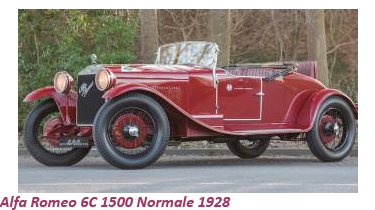 During the Twenties, the company were offering top selling middle range road cars, while indulging Romeo’s passion for track racing, building a few legendary racing cars during the Twenties, including the 40-60 HP and the RL Targa Florio.
During the Twenties, the company were offering top selling middle range road cars, while indulging Romeo’s passion for track racing, building a few legendary racing cars during the Twenties, including the 40-60 HP and the RL Targa Florio.
Alfa Romeo’ s reputation as leaders in motor racing was significantly enhanced when their cars won the inaugural world championship for Grand Prix cars in 1925. A few years later Nicola Romeo had the foresight to bring in a rising young racing driver by the name of Enzo Ferrari to head the Alfa Romeo racing team.
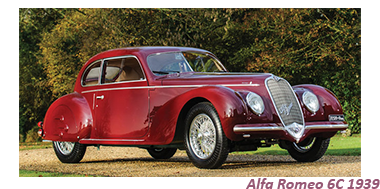 Despite all the glamor, Alfa Romeo was not earning very much in the way of profits, while the costs of running a racing team were taking their toll on the bottom line.
Despite all the glamor, Alfa Romeo was not earning very much in the way of profits, while the costs of running a racing team were taking their toll on the bottom line.
Like a bolt from the blue, Romeo’s backers, the Banca Italiana di Sconto, went into liquidation, leading to several years of stagnation and uncertainty, leading Nicola Romeo to move eventually on to fresh pastures leaving the company in a sorry financial state.
With no other buyers in sight, Alfa Romeo were eventually nationalized, coming under the control of the Istituto per la Ricostruzione Industriale (IRI).
During the Thirties, Alfa Romeo began to establish themselves as a producer of quality sports cars, enhancing national prestige, which greatly pleased the volatile and narcissistic Italian leader Benito Mussolini.![]()
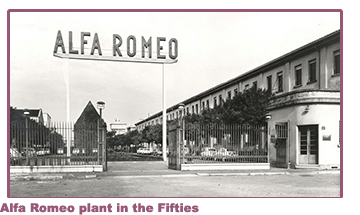 Spurred on by " Il Duce's" encouragement and backing, Alfa Romeo introduced some classic cars during the Thirties including the 2900B Type 35 and the 8C 2300 Spider Corsa,
Spurred on by " Il Duce's" encouragement and backing, Alfa Romeo introduced some classic cars during the Thirties including the 2900B Type 35 and the 8C 2300 Spider Corsa,
In 1940, Italy entered World War Two, and was soundly defeated, leaving the country in dire financial straits. As soon as the hostilities were over, Italy and
Alfa Romeo began a form of recovery process encouraged by the US Administration. The Italian public was certainly not in the market for luxury cars at that point meaning that the Alfa Romeo’s massive production plant at Portello was utilized to manufacture domestic electrics as well as aircraft and marine engines.
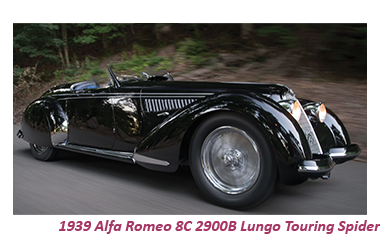 By 1947, Alfa Romeo released their first post-World War Two car which they pretentiously marketed as the ‘The Magnificent” Freccia d'Or.
By 1947, Alfa Romeo released their first post-World War Two car which they pretentiously marketed as the ‘The Magnificent” Freccia d'Or.
While it was an outstanding car in many ways, the Freccia d'Or was nothing more than a tribute to times gone by.
 Obviously not having their lessons from the post-war years, not long after the company returned to motorsports racing and even took first place at the first post-war Formula 1 World Championship with their new Alfa Romeo Tipo 158 Alfetta, driven by the legendary Juan Manuel Fangio, who also went on to win his second consecutive championship for Alfa Romeo in 1951.
Obviously not having their lessons from the post-war years, not long after the company returned to motorsports racing and even took first place at the first post-war Formula 1 World Championship with their new Alfa Romeo Tipo 158 Alfetta, driven by the legendary Juan Manuel Fangio, who also went on to win his second consecutive championship for Alfa Romeo in 1951.
![]()
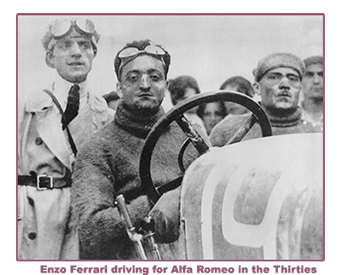 Going into the Sixties Alfa Romeo were, at long last, a well-regarded part of the Italian motor industry, filling a specific market niche in the small to medium sedan and sports car sector.
Going into the Sixties Alfa Romeo were, at long last, a well-regarded part of the Italian motor industry, filling a specific market niche in the small to medium sedan and sports car sector.
Alfa Romeo's street credibility and image for providing reliability and speed was further enhanced when they were ordered a contract in the Sixties to design and produce a range of vehicles specifically for the needs of the Italian police and Carabinieri.
Based on the “ Alfa Romeo “Giulia Super” and 2600 Sprint GT, these cars were particularly outstanding, especially with their color scheme of dark blue with red stripes on a white background.
![]()
 The thousands of tourists who flocked to the Italian coastal resorts and the major cities of Rome, Milan and Turin during the Sixties could not have failed to be impressed by these cars, a considerable factor in the rise in export sales enjoyed by Alfa Romeo during the decade.
The thousands of tourists who flocked to the Italian coastal resorts and the major cities of Rome, Milan and Turin during the Sixties could not have failed to be impressed by these cars, a considerable factor in the rise in export sales enjoyed by Alfa Romeo during the decade.
With demand for Alfa Romeos reaching unprecedented levels, the company made significant investments to achieve large-scale production to increase their production levels.
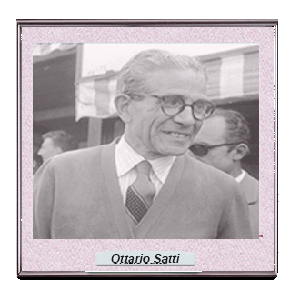 The first model to be produced in large-scale quantities was the Giulia, which, during its production, was the first Alfa Romeo to sell more than one million units, albeit in a variety of configurations.
The first model to be produced in large-scale quantities was the Giulia, which, during its production, was the first Alfa Romeo to sell more than one million units, albeit in a variety of configurations.
Other Sixties top sellers for Alfa Romeo were the 1600 Spider Duetto, Alfa 2600, Giulia Sprint GT, and the Alfa 1750.
Despite during the Sixties and early parts of the Seventies, Alfa Romeo enjoyed critical approval and sales success, profits earned were not enough to satisfy Finmeccanica, the Italian government parent company.
In 1986, once again facing liquidation, Finmeccanica took the opportunity of getting out of the car business, selling Alfa Romeo to the Fiat Group, who have been running the company successfully and profitably ever since.

